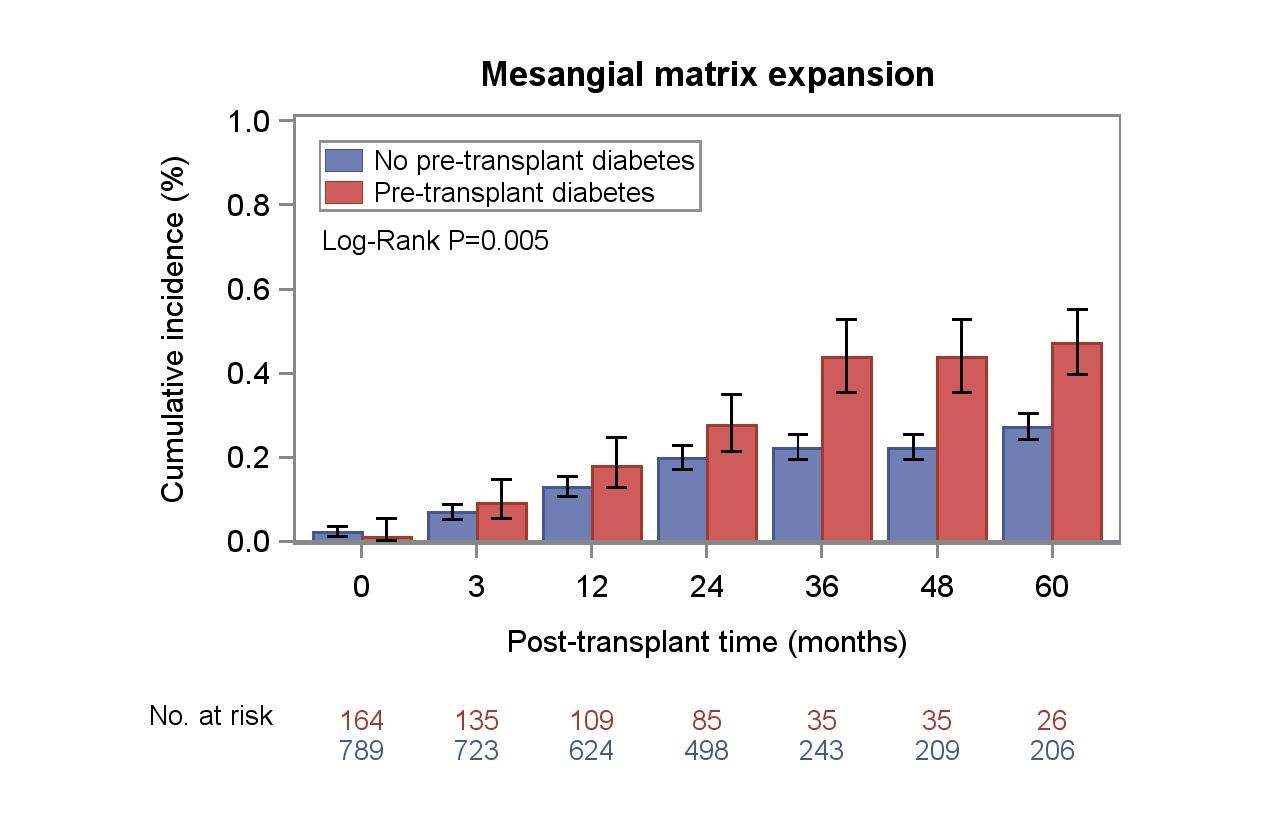Recurrent Diabetic Nephropathy Despite Intensive Glycemic Control: An Observational Cohort Study
M. Coemans, E. Van Loon, E. Lerut, D. Kuypers, B. Sprangers, P. Gillard, C. Mathieu, G. Verbeke, M. Naesens
KU Leuven, Leuven, Belgium
Meeting: 2019 American Transplant Congress
Abstract number: 121
Keywords: Histology, Kidney transplantation, Nephropathy, Protocol biopsy
Session Information
Session Name: Concurrent Session: Kidney: Cardiovascular and Metabolic I
Session Type: Concurrent Session
Date: Sunday, June 2, 2019
Session Time: 4:30pm-6:00pm
 Presentation Time: 5:18pm-5:30pm
Presentation Time: 5:18pm-5:30pm
Location: Ballroom C
*Purpose: After kidney transplantation, recurrence of diabetic nephropathy has been reported. The presentation and kinetics of recurrent diabetic nephropathy and its risk factors remain however unclear. This study investigated the recurrence of diabetic nephropathy after kidney transplantation in light of pre-transplant diabetes.
*Methods: In this single-center prospective cohort study, 953 individual renal allograft recipients were included, with histological data of 3458 protocol-specified renal allograft biopsies, obtained at time of transplantation and during the first 5 years after transplantation. We studied the effect of pre-transplant diabetes on the post-transplant histological evolution.
*Results: Prior to transplantation, diabetes was present in 164 of 953 (17.2%) renal allograft recipients, primarily type 2 (N=146; 89.0%). Despite intensive glycemic control (glycated hemoglobin 7.00±1.34% [53±14.6 mmol/mol], 6.90±1.22% [52±13.3 mmol/mol] and 7.10±1.13% [54±12.4 mmol/mol], respectively at one, two and 5 years after transplantation), mesangial matrix expansion reached a cumulative incidence of 47.7% by 5 years after transplantation in patients with pre-transplant diabetes, vs. 27.2% in the absence of diabetes (see Figure), corresponding to a hazard ratio of 1.55 (95% CI, 1.07 to 2.26; P=0.005). The divergence of cumulative incidences was noted already by two years after transplantation. Pre-transplant diabetes was not associated with other structural changes of the glomerular, vascular or tubulo-interstitial renal compartments. Pre-transplant diabetes was associated with post-transplant proteinuria, but not with estimated glomerular filtration rate or graft failure.
*Conclusions: Mesangial matrix expansion, an early indication of diabetic nephropathy, can rapidly recur in patients with diabetes prior to transplantation.
To cite this abstract in AMA style:
Coemans M, Loon EVan, Lerut E, Kuypers D, Sprangers B, Gillard P, Mathieu C, Verbeke G, Naesens M. Recurrent Diabetic Nephropathy Despite Intensive Glycemic Control: An Observational Cohort Study [abstract]. Am J Transplant. 2019; 19 (suppl 3). https://atcmeetingabstracts.com/abstract/recurrent-diabetic-nephropathy-despite-intensive-glycemic-control-an-observational-cohort-study/. Accessed December 27, 2025.« Back to 2019 American Transplant Congress

